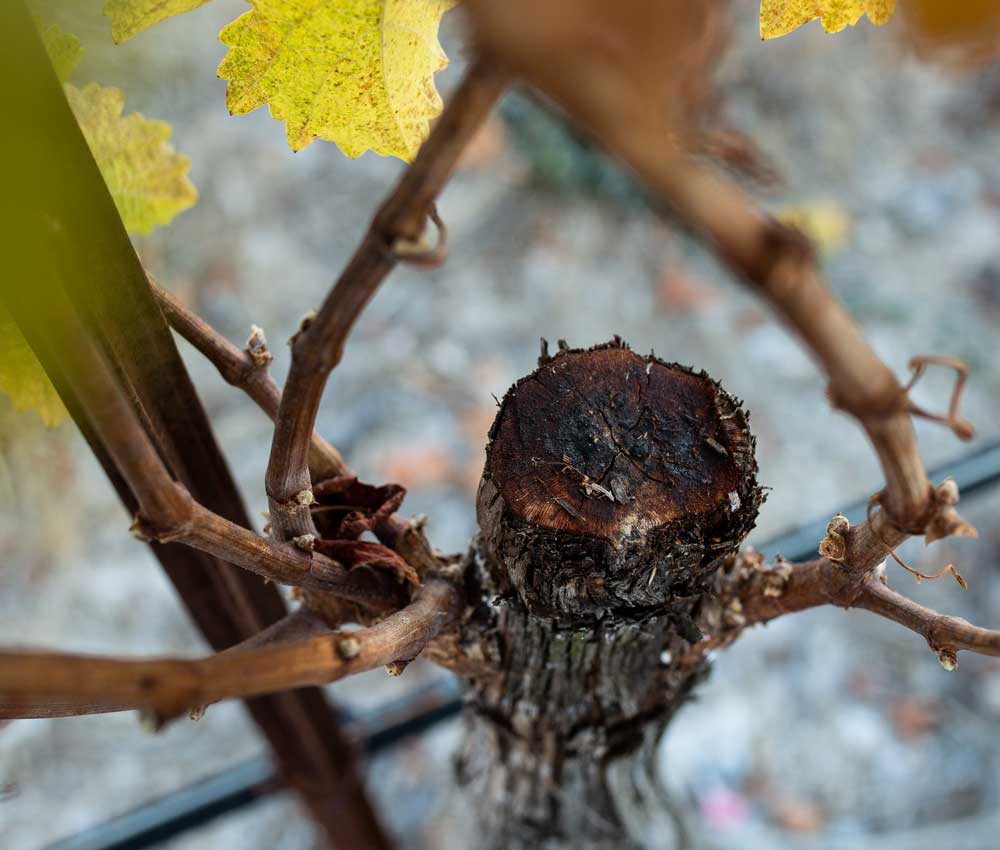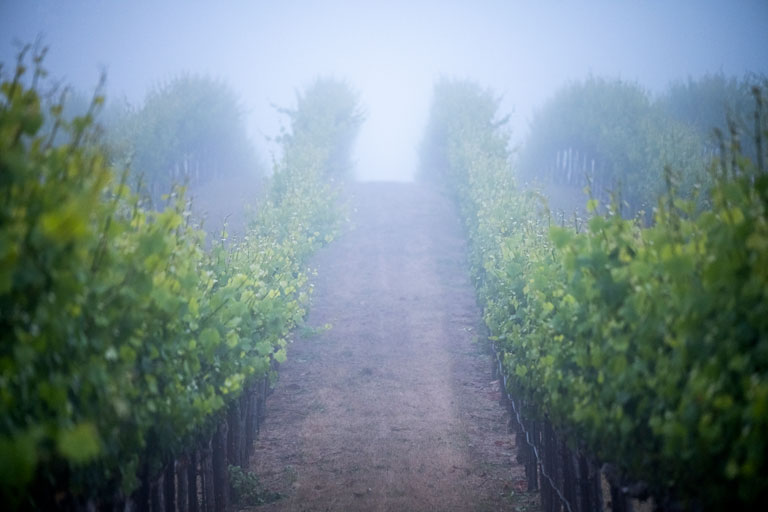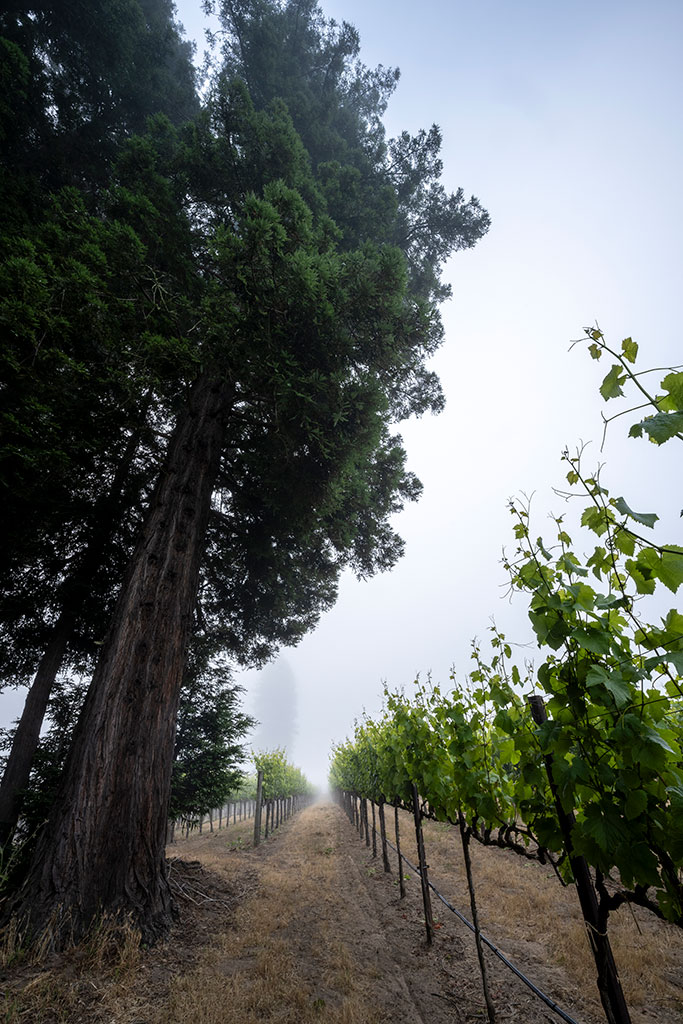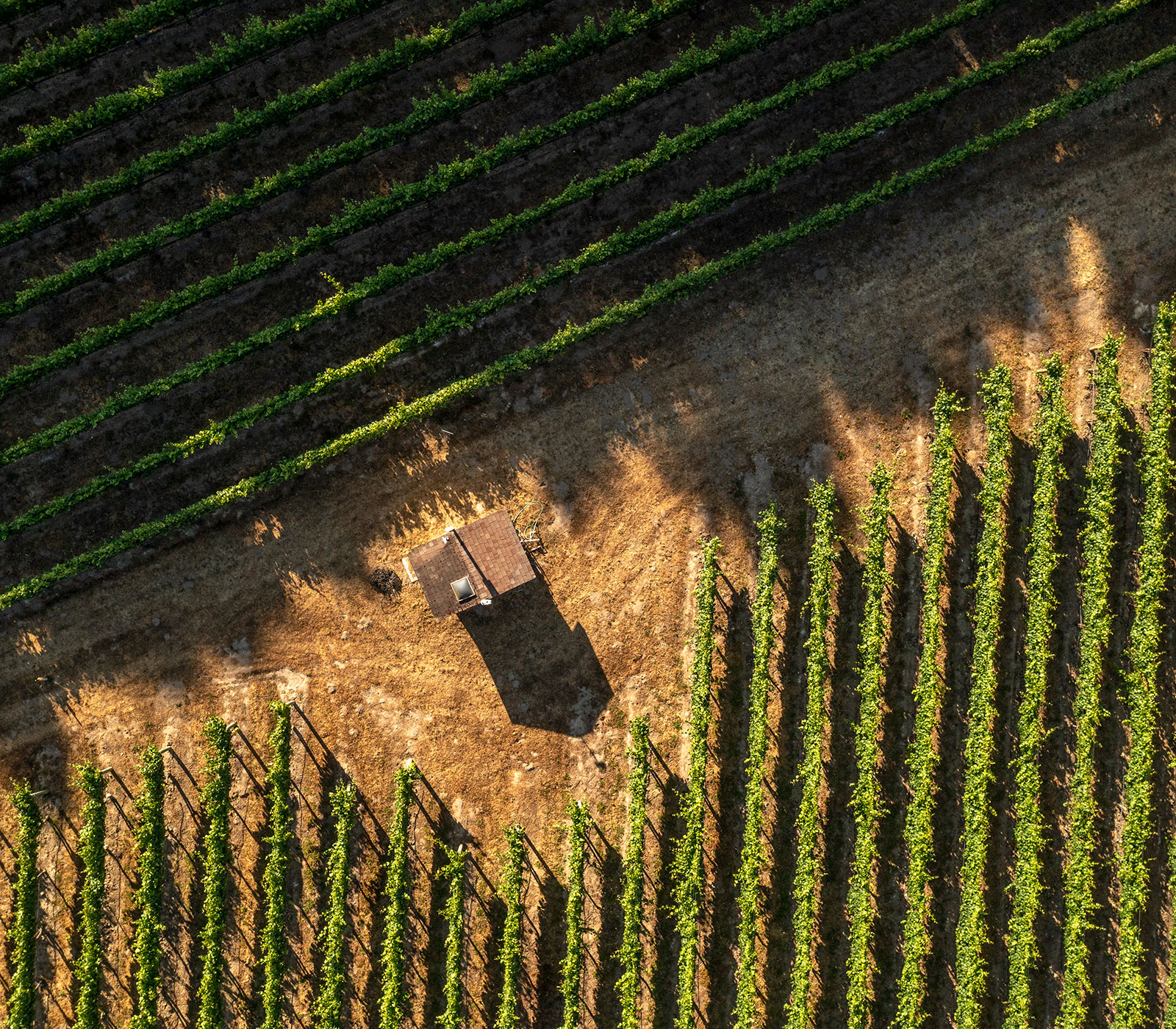
All IN THE FAMILY
Looking back while leaning forward.
The apple has rich history in the shaping of Sonoma County agriculture for more than 200 years. One of the early pioneers of this industry was Thomas Barlow who oversaw the creation of the first applesauce canning facility in Sebastopol in 1939. The family property was set just a few miles northwest of town. In 1992, Thomas’s descendant Tom Barlow partnered with legendary grape grower Mel Sanchietti to plant 22 acres of Louis Martini Clone 13 Pinot Noir on that site which would eventually become Abigail’s Vineyard.
In 2009, Matthew Perry bought the original homestead from the Barlow family naming the vineyard after his daughter. He often dreamed of what the fruit could do, despite it being under contract with another winery through 2020. Over the next eleven years Matthew and Ross became close friends. In 2019 Ross convinced Matthew to top-graft 5.25 acres over to Riesling. They also took budwood from Doc’s Ranch and top-grafted another 2.75 acres to Calera clone Pinot Noir. It was in 2021 that the first wines from Abigail’s Vineyard were made under the Cobb label showcasing both Pinot Noir and Riesling.



TERROIR
Site means everything.
Abigail’s Vineyard is located toward the top of Cherry Ridge Road, northwest of the town of Sebastopol. The soil at this site is the classic Goldridge Series which a mixture of sandy loam and fractured sandstone leftover from an ancient inland sea that eventually retreated into the Pacific Ocean. This soil is known for its great drainage and low vigor making it an excellent candidate for both Pinot Noir and Riesling.
Noting the cool nature of Abigail’s, Ross and Matthew made the commitment to their love of Riesling by grafting a north facing block to the varietal onto the trunks of the original plantings of Pinot Noir. The inaugural vintage of Riesling in 2021 was proof of concept as the resulting wine was stunning. This same vintage marked the first release of Abigail’s Vineyard Pinot Noir which aligns itself in profile toward the more red-fruited, coniferous tones of the Sonoma Coast Ross has become known for.


